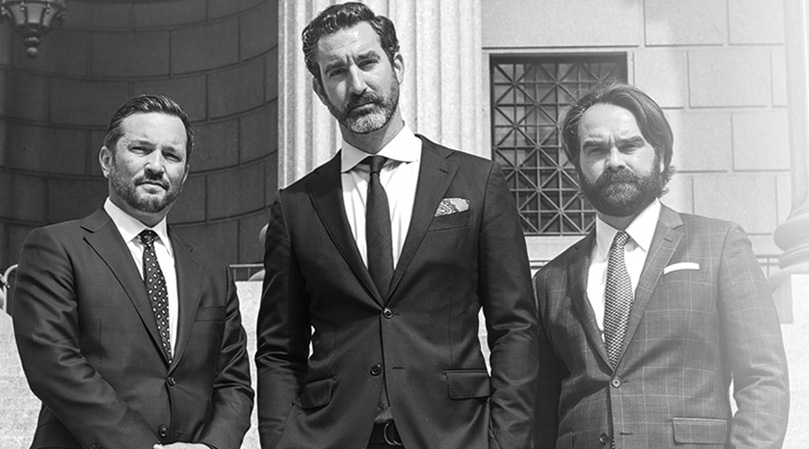When The Police Can Search You: Part Two

In the previous blog post, I wrote about the circumstances under which a police officer may search someone they encounter on the street within the confines of the federal constitution. In other words, it attempted to answer the question of to what extent does the 4th Amendment to the U.S. constitution prohibit police officers from randomly searching people. Here, I write about the circumstances in which the N.Y. constitution prohibits police officers from randomly searching people. This is only a general post about the issues associated with these circumstances and is not intended to substitute legal advice.
The short answer is that the N.Y. inquiry as to whether a stop, frisk, or search was illegal is different and is more liberal in application than under a federal inquiry. This means cops can get away with more under the federal constitution than they can under the N.Y. equivalent.
While the federal constitution deals with terms like “reasonable suspicion” or “probable cause” and the circumstances that warrant these findings, the New York constitution, as determined in the landmark case of “People v. DeBour,” divides police encounters with civilians into four categories (or levels as the courts put it). The more intrusive the police behavior is, the higher the level. As the level increases, the police need more articulable facts to justify the further intrusion. Here are the levels in ascending order.
Suppose an officer walks up to someone and says, “hey, is there anything funny going on here tonight?” This low-level and non-intrusive question is considered a level one encounter. The officer can engage in this “request for information” if he has a credible and objective reason to do so. It cannot, however, be based on a whim. If the person simply walks away and chooses not to answer, there’s nothing the officer can do.
Suppose, however, the cop says “hey, are you up to anything funny?” This is now a level two encounter. A cop can only ask a pointed question like this when he has a “founded suspicion that criminality is afoot.” This means the cop has to objectively suspect that something illegal may be happening that is based upon either an observation or credible hearsay (word of mouth). He can now ask questions of a person that may even force the person to conclude that they are the suspect (whereas for level one, the cop cannot ask questions that lead the person to conclude they are suspected of wrongdoing). This is short of a seizure of the person. This means the person is not under arrest and is free to leave. And here too, the person has the right to not answer. However, if the person runs away or tries to evade the situation, it can escalate the level two encounter into a level three stop.
A level three stop is similar to the Terry stops I outlined in the previous post. Here, a cop can conduct a forceful but temporary seizure of a person. This means the person is temporarily not free to leave while the police officer conducts his investigation as to whether there is illegality. And just like with Terry stops, if the police can temporarily restrain your liberty, they can also frisk you for their safety. According to New York caselaw, a cop can engage in this level three stop when he has “…knowledge necessary to induce an ordinary and prudent person under those circumstances to believe criminal activity is at hand.” Here, the cop can frisk you for his safety, but still cannot flat out search you. He can only feel for weapons, etc. If the cop goes into your pockets, it may be grounds for suppression if he finds something that is illegal but isn’t a weapon.
A level four stop is an arrest. At this point, the cop has probable cause (New York calls it “reasonable cause”) to believe you committed a crime and you are under arrest for that crime. At this point, the cop can search you incident that arrest.
So that’s how it works. The reason this is more liberal than the federal equivalent is because under the federal constitution, cops cannot stop and frisk a person unless they have reasonable suspicion that the friskee is up to no good. However, there is nothing that prevents them from approaching people and stopping short of frisking them. For example, the 4th Amendment does not prohibit cops from walking up to random people for random reasons and saying “Hey, let me look in your bag.” If the person complies, then they just consented to the search and there is no issue. However, Under the N.Y. constitution if a cop does that, it’s a level two encounter. This means he needs “founded suspicion that criminality is afoot.” Even if the person consents, a defense attorney can still suppress the evidence if the cop can’t articulate what that suspicion was based upon.
So that’s the law, but how does this all work in the real world? The problem with this system of levels is that most judges don’t really understand the law. And if judges don’t get it, prosecutors and cops surely won’t either. From my experience, even the best officers kind of just wing it. This means that a good defense attorney is critical in handling any stop and frisk situation because it could literally be the difference between going to prison and getting illegally obtained evidence suppressed.

Request Your Free Consultation
Fields Marked With An “ * ” Are Required
"*" indicates required fields
The Woolworth Building
233 Broadway
Suite 900
New York, NY 10279

